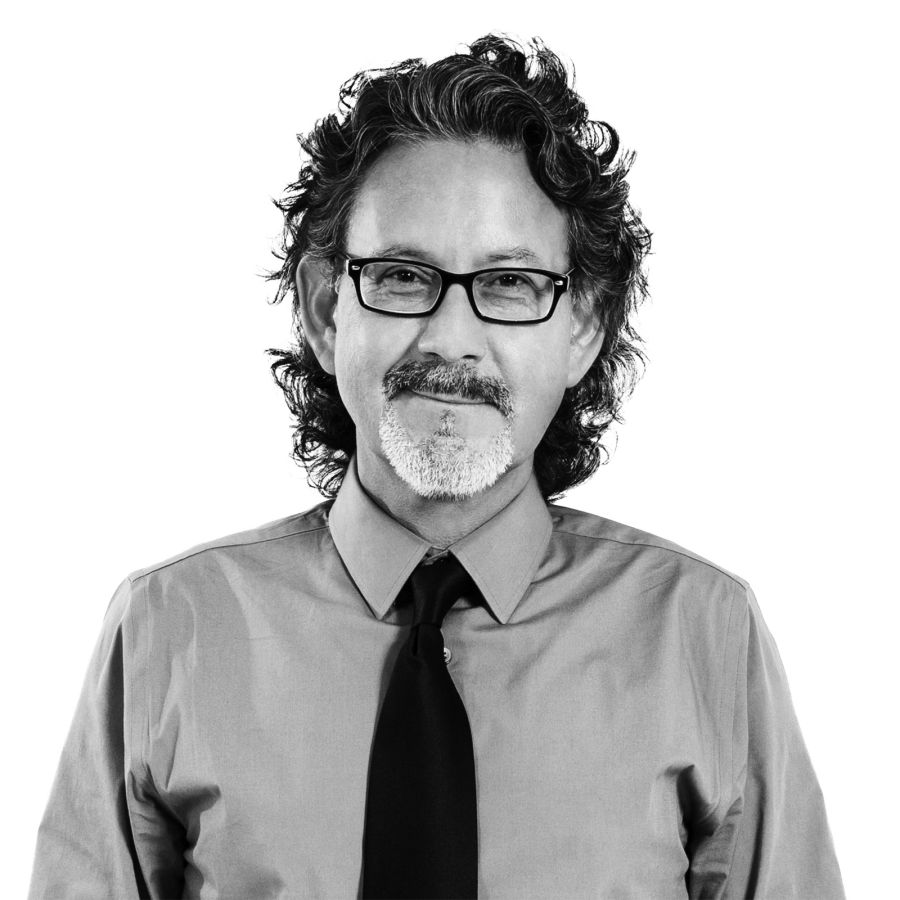By Sean Studzinski, National Principal for Residence Life, and Arturo Vasquez, San Francisco Design Principal, of Stantec. Bios below.
More students than ever are headed to college campuses, and it’s creating a housing crunch. With high population growth rates, California’s Bay Area faces a serious housing shortage, leaving few options for the 80,000-plus students attending the region’s 30-plus institutions.
Many schools guarantee housing for first-year students, while offering lotteries to other students. Those Bay Area students who don’t fit into these categories are left to fend for themselves in the general housing market where rent averages about $3,300 per month. That requires a six-figure income (as a student) or several roommates.
Earlier this year, Arturo Vasquez, Stantec’s San Francisco Design Principal, hosted a student housing discussion focused on the current student housing boom underway in Northern California. He and Sean Studzinski, Stantec’s National Principal for Residence Life, who has designed residence halls for private developers and higher education clients for two decades, sit down with Stantec to talk about how universities and their partners are working together to alleviate the current student housing challenge. For many, public-private partnerships (P3) are the best option.
With the challenges that exist to fund and build student housing, what is the trigger for universities to use a P3 approach or model for student housing?
Sean: There are several triggers. One primary reason is risk aversion. If the University does not have an existing housing program already in place the will have to start from scratch, which can be very costly and risky. In this case, they need private development help to come in and develop, build, and manage the new facility. It keeps the university from having to come up with large sums of money up front and gives them a strong platform to begin and build on a strong residence life program. The P3 relationship is very flexible and can be developed to allow the University as much—or often as little—control over the property as desired.
Another reason is the desire to conserve their bonding capacity for other non-revenue generating facilities such as academic or research. Exceeding their bonding capacity can significantly impact their rating; alternative funding such private investment often does not impact their rating as long as the development is designed and built to provide positive cash flow.
Whether developed as a P3 or traditional institutional method, student housing must be self-sustaining. They have to fund themselves. They typically cannot use any type of state funding or take it from student tuition. We are seeing many universities that have expended their bonding capacity over the last decade or so. Now they are facing a large growth in their student population as well as bureaucratic pressure from the state to keep fees and tuition down. This is leading many systems and campuses to P3 for student housing.
Arturo: Another element that adds a level of complexity for institutions is the pressure of land ownership. When the college looks at “what are we going to do about housing?” They must look at their available land—they must make a decision if that’s going to go to a housing product, or if it’s going to go to an academic program, or a different facility. Maybe they opt to work with a private developer and look at properties and developers working off-site. Both on-campus and off-campus developments can be coordinated in to a P3 agreement that is mutually beneficial to both the developer and the institution.
Particularly in California, land availability is a major issue. Can you explain?
Arturo: As a transplant from the East Coast, the particular wrinkle and the nuances I see in California is the lack of availability of housing to begin with in cities like San Francisco. The pressure of land is so phenomenal that I think institutions and the private sector must be very careful with what they do with properties that are in dense urban environments.
California is experiencing pressure from the tech industry where they have the influx of 200,000 people that come into San Francisco every year and have few housing options. And then you add that to the intensity of the institution that is also drawing in students that want to come to formidable universities here, and then the private sector—people like myself that are just professionals—all fighting for the same space.
Sean: When you get into more dense environments you need to use different products and design. For instance, in Brooklyn we’re working on a 38-story tower that’s going to be a P3 development with an established church organization, however, it will likely house two separate universities and some market rate. So, you have that uniqueness, that’s a result of very little land, but you’re also in a very dense conglomeration of multiple universities or comparable institutions.
The opposite of that is in Texas, where I was born and raised, where we all have big trucks and rarely build housing over 3 or 4 stories on college campuses. Many of the Texas universities have expansive land that we can build on, so the housing does not need to be as dense. (Seriously, we don’t “all” drive big trucks, but I do.)
So, when talking about expensive housing markets like the Bay Area, how can P3 student housing help that affordability situation?
Sean: First off, a private developer is going build 10 or 12 of these facilities a year, whereas an institution will probably build 1 or 2 every 5 or 6 years—at most. For the developer in these P3 scenarios, they just have a better connection to the market and can typically provide greater value through economy of scale. They have better affordability with their consistent use of sub-contractors and have gained efficiencies with their resources.
Also, the university is providing the land through a long-term lease agreement, so that takes the land acquisition process away from the developer, allowing it to be even more affordable while also providing a revenue source for the university. When you look at most institutions, their facilities are usually built to a very high standard. The developer can still build a high-quality product but build it more efficiently.
Arturo: One place where I see this working is in conjunction with transit-oriented development. The incentive for more economically accessible housing is what drives a model there. So now a university wins, the transit authority wins, and the private developer wins because the cost of the land is a lot less.
So maybe you have a mixed-use product with some of the units for student housing and some for housing for the general population, similar to the product we are developing in Brooklyn. I think we’ll see that a little bit more down the line as institutions look for non-traditional ways to build housing and how cities are looking for a way that they can provide housing.
When you sit down to talk with universities do you find yourself needing to explain the value of the P3 process?
Sean: There are still a lot of institutions where the “P3 concept” is taboo. They remember what happened 20 or 30 years ago when a lot of developers came in and provided a very cut-rate product on these institutions. They sold it to a lot of universities under the P3 model basically saying, “We’re gonna develop your housing, and take all the risk, and we’ll give you money back. And then in 30 years, we’re gonna turn the buildings over to you, and they’ll be yours completely free.”
Well, they built such a low-quality product that in 30 years the product was worthless, and the university is left with this building that’s basically falling apart. The maturity and sophistication of the developers is so much higher now, and the quality of what they’re producing and developing is so much higher. In addition, the model can be custom tailored to meet each university’s specific needs, it is no longer a “bottom line” agenda. The developers we work with are truly looking for a long-term relationship that meets the needs of the university and the students.
Arturo: What I’m seeing is that on the other side, it depends on the sophistication of the college. P3 is not a risk-free concept.
Our developer partner at University Student Living, put it in a very good way, “Once you’ve done one P3, you’ve only done one P3.” That’s because each is so unique in their interpretation. So, in this case, I think the private sector, and even the design industry, is a little bit further ahead in the understanding than I think the institutions are. It’s our responsibility to help them with this model of delivery.
What sort of innovations have there been in student housing in terms of design and construction?
Sean: There have been a variety of systems and construction methods that I think are very heavily influencing it. One we’re using a lot of is prefabricated structural systems. Also, the efficiency of the delivery that we are seeing that is related to the design overall.
I think where we’ve seen the biggest change is the mentality of the campuses. In the distant past, most of the student housing was designed under a very militaristic type system. The thinking was students just needed a place to lay their heads and eat. This was heavily influenced by the large population of baby boomers entering universities in the ’50s and ’60s, and beds were needed very quickly. Recent studies have shown that students spend over 80% of their time in the residence life facilities on a campus, versus less than 20% in the actual academic facilities.
Historically, universities have placed more than 90% of their funding in these academic facilities. They are realizing now that’s not really where the students are learning, that’s not where they’re interacting, that’s not where they’re building community. They’re spending most of their time and interactive learning in the residential life facility, and so we’re starting to see more of a focus on the development of these facilities. Universities have also discovered residence life facilities have become one of the key factors in a student’s decision to attend one university over another.
We’re seeing more active learning centers, that’s what we call them, that are being integrated into the residence life facilities.
Arturo: It’s interesting, because the traditional campus had physical space that was very well defined. There’s the housing piece, there’s academic, a student center, and a recreation site.
Now, from a design perspective, you must be a lot more flexible with a fully wired campus. You can study from anywhere. Now some of the buildings are a little bit more of a mixture where we are seeing spaces that weren’t there before because students will learn in the residence facility.
Students are spending a lot more time virtually learning. So I think that the typology from the design side has changed significantly in being able to be efficient for that return-on-investment spaces that the developer is looking for in a P3 model, but still be able to put in nooks and areas where a student can perform another function other than being in their residence, or in their living space.
Helping universities and their students
Public Private Partnerships are not the final solution or the end-all-be-all for everyone, but they can help to resolve many issues institutions are facing today when properly implemented.
The flexibility inherent in the model allows each delivery to be custom tailored to the university’s wants and desires. P3 delivery and use of private resources can be very beneficial to public institutions and, most importantly, to the students they serve. If you have not explored this method of delivery lately, we encourage you take a look, you may find something that can help to resolve the issues you are facing on your campus today.
SEAN STUDZINSKI has been designing residence halls for private developers and higher 
Sean believes that student life is the heart and energy of a campus. He is passionate about working alongside students to develop design solutions that support their ambitions and career goals. Considered a thought leader, Sean has given seminars on the evolution of student housing facilities nationwide. He promotes a forward-looking approach to residence hall design and is eager to see what transformations the next few decades bring.
The level of dedication seen in Sean’s work carries over to his free time. When he’s not in the office, Sean is an avid outdoorsman and can be found spending time with family, boating or hunting, and even training for his next triathlon. Read more about Sean, and peruse other articles he’s written.
ARTURO VASQUEZ DEL MERCADO is an accomplished architect, urban designer, and 
With a strong sense of design and acute cognitive skills, Arturo can draw creative vision from listening to his clients and synthesize those ideas into built form. His extensive expertise in architecture, urban design history, and theory have enabled him to help develop facilities for a wide range of sectors. His most beloved project? The Precision Cancer Medicine Building at UC Mission Bay, stating it was a transformative project for our San Francisco office, the client, and the community.
Having just moved to San Francisco, California last year, Arturo has been taking his time enjoying the beautiful Bay area. He loves long distance running and is active in races of all distances. Read more about Arturo, and see projects he’s worked on.

